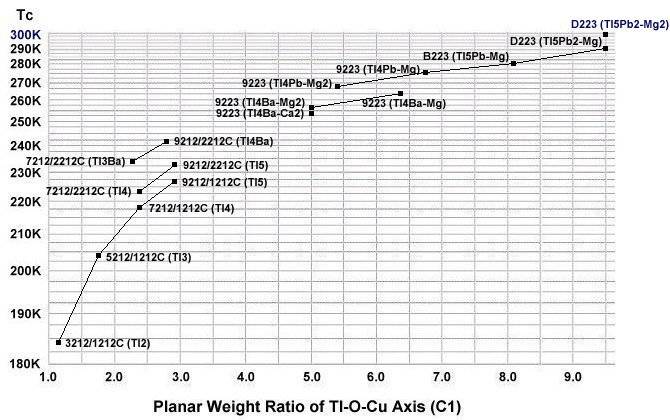JimBowie1958
Old Fogey
- Sep 25, 2011
- 63,590
- 16,829
- 2,220
Room-Temperature Superconductivity in a Copper Oxide

Sounds interesting....
The question of whether room-temperature superconductivity (RTSC) is possible in the copper-oxides has been answered. Superconductors.ORG herein reports the observation of superconductivity near 28 Celsius (83F, 301K) in a senary oxycuprate.
Normally, extreme cold is required to cool even a "high temperature" superconductor below its critical transition temperature (Tc). To make this discovery, no cooling was required. For the first time a cryostat actually had to be heated to witness a superconductive phase transition.
The hallmark of superconductivity is a sudden resistance drop to zero ohms and strong diamagnetism (the Meissner effect) near the same temperature. In numerous tests a small amount of the compound (Tl5Pb2)Ba2Mg2Cu9O17+ consistently produced sharp resistive transitions near 28.5 Celsius (see above graphics), and diamagnetic transitions also near 28.5C (see below)1. The transitions were unambiguous, repeatable, and at ambient pressure, making this the first observation of true room-temperature superconductivity in a copper-oxide....
This achievement came as a result of efforts to reformulate the 18C superconductor discovered in March 2011. The key to improving that material was substitution of a magnesium atom into one of the C2 copper sites (see "LIGHT" region of D223 graphic at left). By doing this the planar weight ratio (PWR) of the C2 axis increases, while the PWR of the C1 axis remains unchanged. Research since 2005 has confirmed a direct correlation between PWR and Tc.
Logically, the next evolutionary step might be to place magnesium atoms into both C2 copper sites. But, experience has shown every metallic non-copper layer must have a copper layer adjacent to it on at least one side. 2 Mg atoms in the LIGHT C2 would necessitate a copper in the LIGHT C1 to meet this requirement. However, since Cu is over 2.5 times as heavy as Mg, that would significantly lower the C1 PWR, causing a drop in Tc.
...

Sounds interesting....